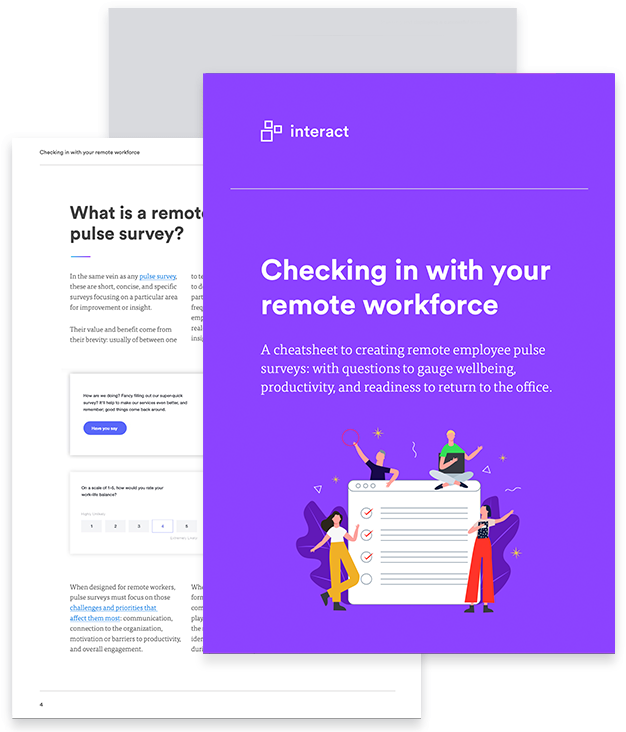We’re working longer hours than ever before. With over 83% of US employees suffering from work-related stress every year, how do we contain, manage, and even reduce this workplace epidemic?
Mental wellbeing and stress management are vital to both the worker and the company. For teams worldwide, ensuring that stress levels are kept to a minimum will reduce mental health complaints and make people generally happier when undertaking their day-to-day roles. This translates to more motivation and better results for the business.
However, it’s not always simple to reduce stress. In the fast-paced environment that many professionally operate in, it’s easy to get caught up in the hustle and bustle of deadlines and targets. That’s why it’s essential to highlight initiatives like Stress Awareness Month, taking place every year in April.
The impact of COVID-19 on mental health

The COVID-19 pandemic has impacted millions of people’s mental health across the globe. It has caused a high level of stress, leading to an imminent psychological public health crisis as countries try to navigate such an unprecedented situation. The external stressors of living through a deadly pandemic have real consequences, both mentally and physically.
Checking in with your remote workforce
There is no question that the uncertain future caused by the pandemic has disrupted the everyday lives of many, impacting everything from children’s education to professional sports. During these historical times, being aware of stress levels and doing everything possible to reduce them becomes even more imperative.
In the USA, the American Psychological Association (APA) warns that the impact of COVID-19 could lead to a substantial mental health emergency, with far-reaching consequences for years to come. In fact, eight in ten American adults (78%) say the pandemic has been a serious source of stress in their lives.
In the UK, mental health charity Mind states that up to ten million people (15% of the population) will require new or additional mental health support due to the pandemic’s impact. They also predict that 1.5 million of those seeking support will be children and young people under 18.
What can employees do to prevent stress in the workplace?

Whilst the persistent drumbeat of the COVID-19 crisis has certainly exacerbated anxiety for many people, stress in the workplace has been an ongoing consideration for many years. Stress Awareness Month runs throughout April and has for the past 29 years, since 1992. So, whilst the pandemic has worsened the situation, it certainly isn’t the defining factor, and stress has existed in many forms for a much longer period.
Stress can be a significant factor in causing mental issues, like anxiety and depression. It has also been proven to worsen physical problems, such as a diminished immune system and heart disease. No employee’s health should ever have to suffer whilst undertaking their daily duties, so it’s crucial to understand individual triggers and what measures can be taken to cope with them. That way, it is possible to gradually reduce the impact, not only for the employee but for the organization as well.
There are several steps to take to reduce the impact of work-related stress and support colleagues going through a tough time.
Take some time out
It goes without saying that work is important for most people, but during periods of increased stress or anxiety, making sure to take some time out can avoid burnout and get mental health back on track. Emphasize self-care. Exercise, sleeping, and eating healthily can be difficult when overly stressed, but taking these steps will really help combat that feeling of being overwhelmed.
Talk to a manager
Reaching out to someone senior can help, particularly if there’s already a good existing relationship. If it is uncomfortable to talk about, don’t feel obligated to get too in-depth and detailed about the emotional side, but don’t be afraid to either. A manager should be able to put measures into place during work hours that allow their team to get the required support, whether that is extra help, an extended deadline, or just a regular one-to-one chat. Be open with those that can help professionally; otherwise, things are more difficult to change.
Checking in with your remote workforce
Reduce the stigma
Even in 2021, mental health can be stigmatized, and it can be difficult for sufferers to talk about the topic openly. Many fear judgments or a negative response from colleagues when discussing their own mental health problems. This can result in situations shrouded in secrecy, such as being dishonest about why time off is required. Keeping the truth hidden only makes the stress worse. Teammates can help by talking compassionately about the subject and offering support. Having open lines of communication breaks down the taboo and helps to remove the fear of discrimination.
Share coping mechanisms
One of the few positives about the COVID-19 pandemic is that we are all experiencing it collectively, and many have developed new techniques to cope with stress.
Whether it is yoga and meditation, baking, Zoom quizzes, getting a pet, or having a nice bubble bath at the weekend, self-care can make a big difference in reducing stress after a busy workday. Sharing techniques with colleagues, and being open about existing stressors in daily life, can help individuals feel less alone.
Developing intrapersonal skills
Another aspect of self-care is self-communication. What is intrapersonal communication? It’s everything you do mentally, vocally, or even graphically to help you remember or process experiences. Developing a healthy inner voice can be a way to reduce self-generated stress and reduce cortisol levels.
How does minimizing stress help businesses?

Work stress is serious for the employee but can also have a big impact on organizations. Staff wellbeing and employee engagement are hot topics for a good reason. If not addressed, work stress can prevent businesses from attaining their goals and makes staff retention difficult.
Helping employees manage stress can support a company’s objectives and removes the potential for a negative business impact, particularly during ongoing life-altering events such as the COVID-19 pandemic.
Less staff sickness and absence
Stress has a proven impact not just on mental health but physical health. If workers feel supported by their employer and can be open with their manager when feeling under immense strain, this will likely reduce any subsequent sick days. Early recognition of the warning signs can help prevent the situation from spiraling unnecessarily.
Better quality of work
Suffering from stress can cause counterproductive work behaviors, which means that output and decision-making could ultimately suffer. Communication and creating an enjoyable work environment mean happier and healthier teams that feel valued and work harder.
Improve brand reputation
Word can quickly get round about an unsupportive work environment. With sites like Glassdoor and LinkedIn popular amongst workers, it could be bad for the brand’s reputation if multiple current or ex-employees are dissatisfied with how they have been treated with regards to their mental health. This, in turn, could affect staff retention and recruitment in the long run, so it pays to make an effort to re-energize employees.
Enhance company culture
Lots of organizations have staff wellbeing initiatives as part of their company culture, whether that is on-site benefits such as free massages or lunchtime yoga classes, or recharge days and social events offered in addition to accrued holidays. But building a stress-aware culture goes deeper than that. It emphasizes how the business treats its employees during difficult times and how employees view themselves within the business.
Poor communication exacerbates workplace stress

Workplace stress is at an all-time high and globally costs businesses millions every year. With many companies operating their entire workforce remotely for the first time, there are questions about how to communicate with staff and check in on their wellbeing without being overbearing.
HR and communication teams are doing their best during a difficult time, utilizing various tools to recreate internal culture whilst the workforce remains scattered and fragmented.
Checking in with your remote workforce
Even with these new communication methods and video software, many teams are navigating unchartered territory within the remote workplace. Those that live alone are particularly at risk of feeling isolated due to the nature of lockdown. Still, thanks to the uncertain future, health worries, and everchanging government guidelines, the entire workforce is at risk of emotional and mental health concerns.
This puts a lot of pressure on those internal communicators within a business to ensure that their strategy is strong and tailored to multiple organization areas. What is relevant for one team in the business may not be interesting to another, particularly in a company that spans multiple countries and languages.
Personalizing and customizing content can provide a way to improve distribution and increase engagement, as employees can tailor the subjects they are interested in and disregard the ones that are not relevant. Subscribing to content in this way allows flexibility, ensuring vital updates are conveyed yet avoids overwhelming teams with communications that simply aren’t relevant to them.
“What is relevant for one team in the business may not be interesting to another, particularly in a company that spans multiple countries and languages.”
In these difficult times, it can also help to check the pulse of an organization. These shorter employee surveys can help recognize any areas of the business experiencing high levels of stress so that they can be supported accordingly. Data modeling and analysis with real-time insights allow for quick and easy identification, acknowledging the need for further investigation and early decisive action if required.
Celebrating Stress Awareness Month

Stress Awareness Month starts next week, which also marks just over a year since the pandemic began for many of us. During April, make an effort to be conscious of stress levels at work and consider that the current situation has increased anxiety levels for millions of people globally. Many are feeling a lot more stressed than usual at the moment.
“Most importantly, be kind and take the time to check in with others.”
With that in mind, take some time out to focus on wellbeing and mental health, and talk about it with teammates. Support each other, whether that is over email, a communication platform like Teams, or using video software. Don’t be reluctant to reach out for help if it is needed.
One activity that Stress Awareness Month encourages is the ’Thirty Day Challenge’. It asks participants to do one positive action for their mental, physical, or emotional wellbeing every day throughout April. This can be as simple as phoning a family member, going outside for a walk, or an internet shopping treat. Most importantly, be kind and take the time to check in with others.
Facing problems head-on and talking openly about emotional wellbeing with colleagues will help break down the final taboo surrounding mental health. Increased awareness about stress in the workplace and starting that conversation, perhaps through a company blog, an email communication, or a simple chat between teammates, could provide vital support to an individual who is feeling particularly overwhelmed.



